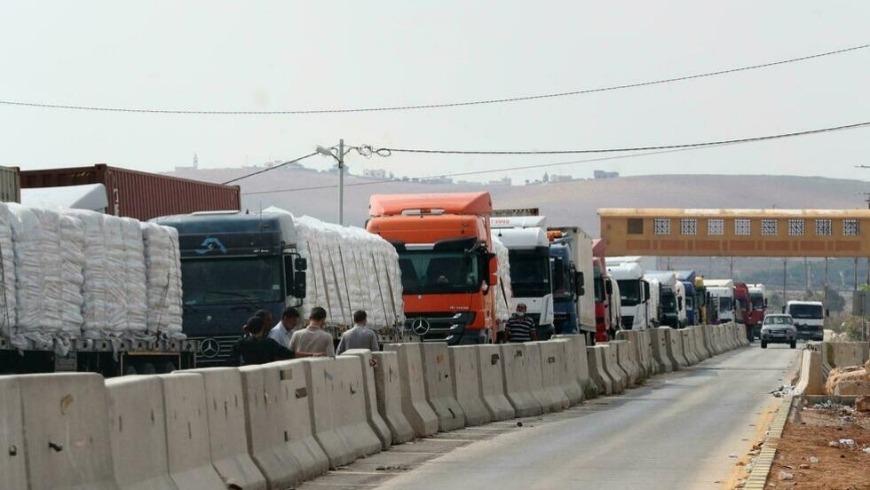Syria announced on Tuesday that it will no longer allow trucks from Saudi Arabia and Egypt to enter its territory, citing unequal treatment of Syrian vehicles by the two countries. The decision, issued by the General Authority for Land and Sea Crossings, mandates that goods from Saudi and Egyptian trucks must now be offloaded and transferred (a process known as “transshipment”) at the border crossings, rather than allowing the trucks to proceed inside Syrian territory.
According to Mazen Alloush, Director of Public Relations at the authority, the move was made in response to ongoing complaints by Syrian truck drivers and refrigeration truck operators who face repeated entry bans and restrictive conditions when attempting to access Saudi and Egyptian markets.
“This decision upholds the principle of equal treatment and protects the interests of Syria’s land transport sector,” Alloush told state-run news agency SANA. “We are committed to ensuring fairness and reciprocity in regional trade relationships, and we have coordinated with relevant authorities to enforce this policy.”
The restriction is set to go into effect on Sunday, July 20, and comes as hundreds of Syrian trucks remain stranded at the Jordanian border due to recent Saudi-imposed conditions on Syrian freight carriers.
Background: Uneven Access and Commercial Barriers
Syrian officials have long voiced frustration over the continued prohibition of Syrian trucks from entering Saudi Arabia and Egypt. Despite recent diplomatic overtures between Damascus and its Arab neighbours, transportation and trade ties remain hindered by unresolved policy disputes and lingering mistrust.
Drivers complain of arbitrary requirements and delays, particularly from Saudi customs, which recently implemented new entry conditions for Syrian vehicles. These include stricter inspection protocols, complex registration demands, and limitations on the types of goods permitted.
Turning to Turkey: A New Trade Corridor Opens
In a notable development, Syria has signed a memorandum of understanding with Turkey aimed at reviving the long-dormant road transit (TIR) route between the two countries. This move marks a major shift in Syria’s trade posture and a potential pivot toward northern routes as alternatives to southern corridors through Jordan and the Gulf.
“The agreement reestablishes Syria’s vital role as a commercial bridge between Asia and Europe,” Alloush stated via his official X account. He described the memorandum as a strategic breakthrough that could revitalize regional trade arteries long paralyzed by war and sanctions.
The agreement with Turkey reportedly includes logistical and administrative coordination to ease border crossings, accelerate customs processes, and ensure the smooth movement of goods. If implemented effectively, it could restore Syria’s relevance as a key node in the overland trade routes stretching from Iran and Iraq through the Levant into Europe.
Implications
The new ban on Saudi and Egyptian trucks is likely to strain Damascus’s relations with both countries, particularly as Syrian authorities claim they are only applying the same restrictions imposed on their own truckers. But the decision also signals a growing assertiveness by the Syrian government in defending its economic interests, particularly as it seeks to normalize trade and diplomatic relations post-conflict.
Simultaneously, the reopening of logistical ties with Turkey—Syria’s former foe turned cautious partner—underscores the pragmatic realignment underway in Damascus. As traditional Gulf routes become politically and logistically fraught, Syrian authorities appear increasingly willing to explore alternatives to secure economic recovery and strategic leverage.
Whether this shift bears long-term fruit or sparks new regional tensions remains to be seen. For now, Syrian drivers hope the policy will mark a step toward greater equality on the region’s roads—and perhaps, more broadly, in its diplomacy.
This article was translated and edited by The Syrian Observer. The Syrian Observer has not verified the content of this story. Responsibility for the information and views set out in this article lies entirely with the author.


